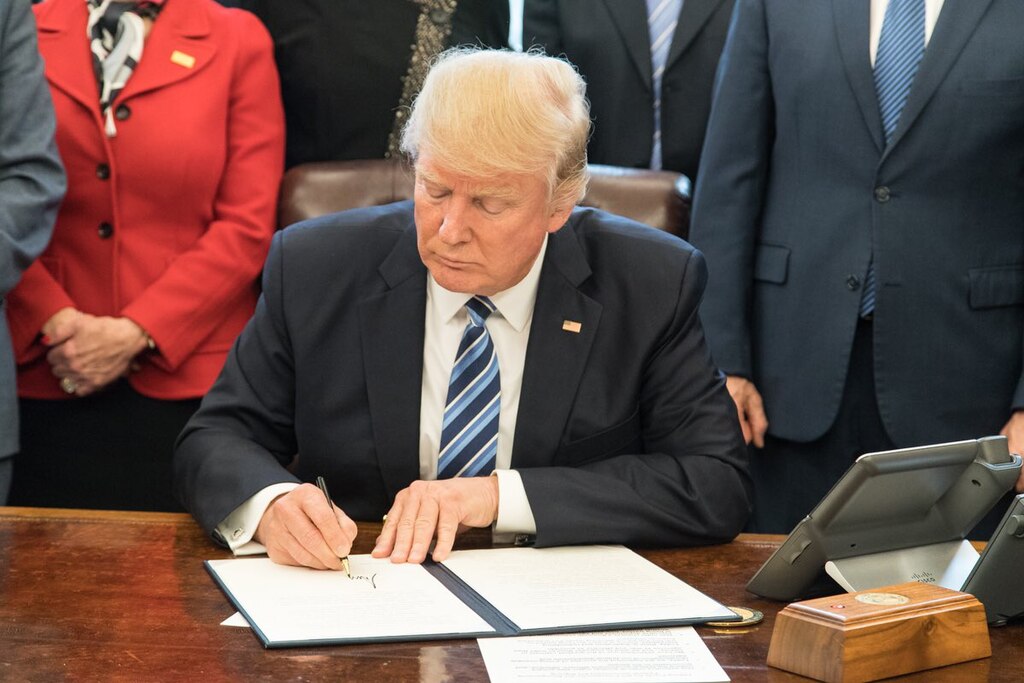Federal employees returning to office after years of remote work face chaotic and unprepared workplaces. NASA headquarters in Washington has cockroach infestations, while IRS staff in Memphis struggle with privacy concerns in shared spaces. Employees at U.S. Citizenship and Immigration Services compare their fight for desks to "The Hunger Games."
President Donald Trump's January 20 mandate to bring back federal employees aims to reduce government inefficiencies, but critics argue it is a strategic move to encourage resignations and cut the 2.3-million-strong workforce. Many offices lack desks, internet access, and proper seating, with some workers resorting to sitting on floors or in cars using personal hotspots. An IRS official in California was assigned to work in a supply closet.
Unions argue the disorder is intentional. "Bringing people back was a ploy to increase stress and force resignations," said Steve Lenkart of the National Federation of Federal Employees. Employees report reduced productivity as they struggle for basic resources. At NASA’s Goddard Space Flight Center, overcrowding forces some to take meetings from their cars.
Despite government claims that workplaces are adequately prepared, federal buildings have seen a mass exodus, with over 100,000 employees either resigning or taking buyouts. The Department of Justice and Department of Agriculture offices also report overcrowding, inadequate facilities, and lack of essential resources like parking and paper towels.
Trump’s administration defends the return-to-office order as a necessary step to improve government efficiency. Washington's mayor supports it for economic revitalization, but many federal employees argue it has led to confusion and dysfunction. As frustrations grow, the question remains: Is this truly about efficiency, or is it a calculated move to reshape the federal workforce?



 NSW to Recall Parliament for Urgent Gun and Protest Law Reforms After Bondi Beach Shooting
NSW to Recall Parliament for Urgent Gun and Protest Law Reforms After Bondi Beach Shooting  Ukraine Claims First-Ever Underwater Drone Strike on Russian Missile Submarine
Ukraine Claims First-Ever Underwater Drone Strike on Russian Missile Submarine  Australia Enforces World-First Social Media Age Limit as Global Regulation Looms
Australia Enforces World-First Social Media Age Limit as Global Regulation Looms  EU Expands Carbon Border Levy to Car Parts and Appliances, Tightening Climate Trade Rules
EU Expands Carbon Border Levy to Car Parts and Appliances, Tightening Climate Trade Rules  U.S. and Mexico Reach New Agreement to Tackle Tijuana River Sewage Crisis
U.S. and Mexico Reach New Agreement to Tackle Tijuana River Sewage Crisis  Jimmy Lai Convicted Under Hong Kong National Security Law in Landmark Case
Jimmy Lai Convicted Under Hong Kong National Security Law in Landmark Case  Trump’s Rob Reiner Remarks Spark Bipartisan Outrage After Tragic Deaths
Trump’s Rob Reiner Remarks Spark Bipartisan Outrage After Tragic Deaths  Taiwan Political Standoff Deepens as President Lai Urges Parliament to Withdraw Disputed Laws
Taiwan Political Standoff Deepens as President Lai Urges Parliament to Withdraw Disputed Laws  DOJ Sues Loudoun County School Board Over Transgender Locker Room Policy
DOJ Sues Loudoun County School Board Over Transgender Locker Room Policy  Thousands Protest in Brazil Against Efforts to Reduce Jair Bolsonaro’s Prison Sentence
Thousands Protest in Brazil Against Efforts to Reduce Jair Bolsonaro’s Prison Sentence  Australia’s Under-16 Social Media Ban Sparks Global Debate and Early Challenges
Australia’s Under-16 Social Media Ban Sparks Global Debate and Early Challenges  Trump Taps Former DHS Official Troy Edgar for U.S. Ambassador Role in El Salvador
Trump Taps Former DHS Official Troy Edgar for U.S. Ambassador Role in El Salvador  U.S. Homeland Security Ends TSA Union Contract, Prompting Legal Challenge
U.S. Homeland Security Ends TSA Union Contract, Prompting Legal Challenge  U.S. State Department Reverts to Times New Roman in Push for “Professionalism”
U.S. State Department Reverts to Times New Roman in Push for “Professionalism”  Trump Weighs Reclassifying Marijuana as Schedule III, Potentially Transforming U.S. Cannabis Industry
Trump Weighs Reclassifying Marijuana as Schedule III, Potentially Transforming U.S. Cannabis Industry  Belarus Frees Opposition Leaders Maria Kalesnikava and Viktar Babaryka in U.S.-Brokered Deal
Belarus Frees Opposition Leaders Maria Kalesnikava and Viktar Babaryka in U.S.-Brokered Deal  U.S. Military Bill Seeks to End Dependence on China for Display Technology by 2030
U.S. Military Bill Seeks to End Dependence on China for Display Technology by 2030 






























